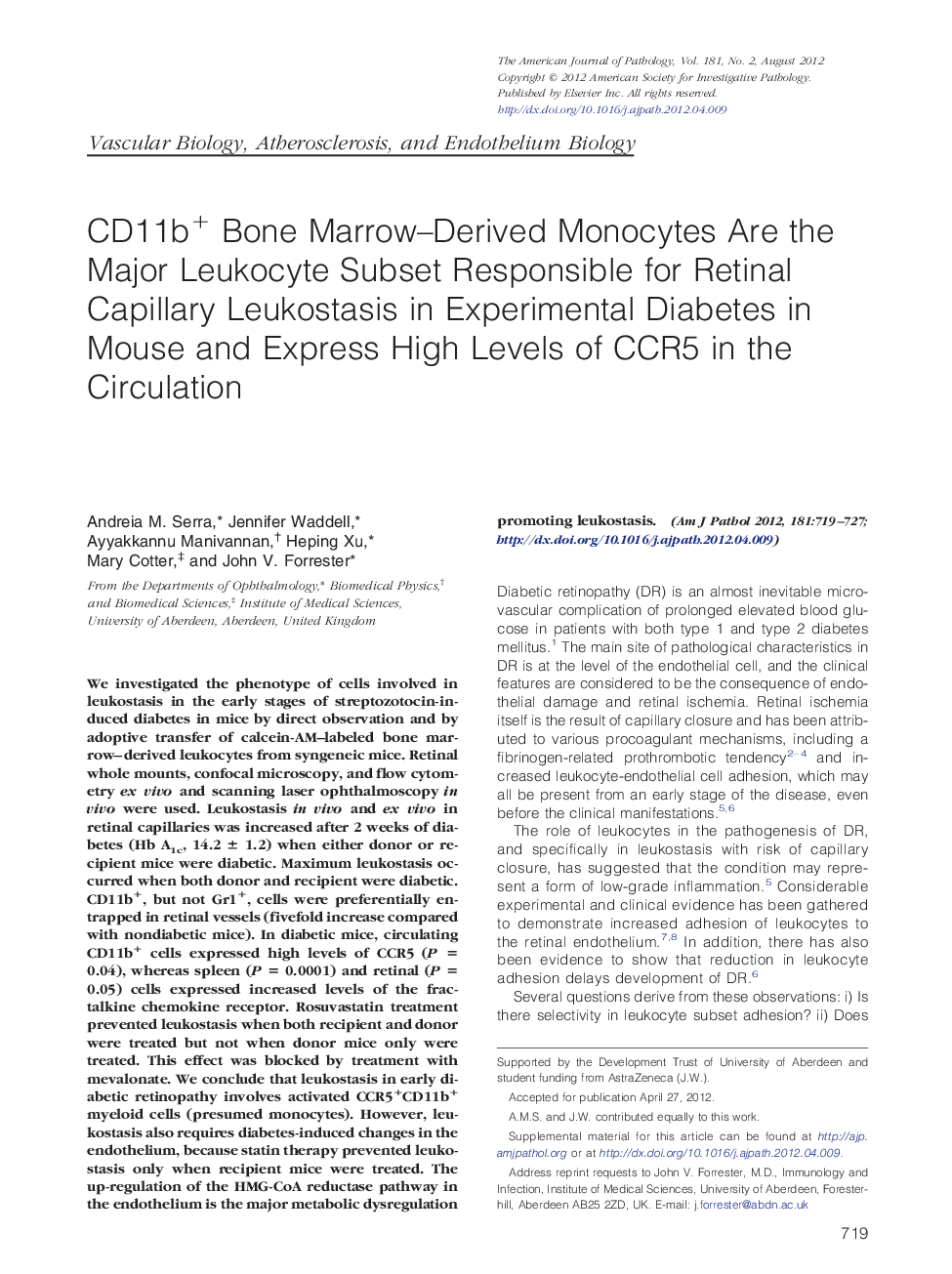| Article ID | Journal | Published Year | Pages | File Type |
|---|---|---|---|---|
| 5933463 | The American Journal of Pathology | 2012 | 9 Pages |
Abstract
We investigated the phenotype of cells involved in leukostasis in the early stages of streptozotocin-induced diabetes in mice by direct observation and by adoptive transfer of calcein-AM-labeled bone marrow-derived leukocytes from syngeneic mice. Retinal whole mounts, confocal microscopy, and flow cytometry ex vivo and scanning laser ophthalmoscopy in vivo were used. Leukostasis in vivo and ex vivo in retinal capillaries was increased after 2 weeks of diabetes (Hb A1c, 14.2 ± 1.2) when either donor or recipient mice were diabetic. Maximum leukostasis occurred when both donor and recipient were diabetic. CD11b+, but not Gr1+, cells were preferentially entrapped in retinal vessels (fivefold increase compared with nondiabetic mice). In diabetic mice, circulating CD11b+ cells expressed high levels of CCR5 (P = 0.04), whereas spleen (P = 0.0001) and retinal (P = 0.05) cells expressed increased levels of the fractalkine chemokine receptor. Rosuvastatin treatment prevented leukostasis when both recipient and donor were treated but not when donor mice only were treated. This effect was blocked by treatment with mevalonate. We conclude that leukostasis in early diabetic retinopathy involves activated CCR5+CD11b+ myeloid cells (presumed monocytes). However, leukostasis also requires diabetes-induced changes in the endothelium, because statin therapy prevented leukostasis only when recipient mice were treated. The up-regulation of the HMG-CoA reductase pathway in the endothelium is the major metabolic dysregulation promoting leukostasis.
Related Topics
Health Sciences
Medicine and Dentistry
Cardiology and Cardiovascular Medicine
Authors
Andreia M. Serra, Jennifer Waddell, Ayyakkannu Manivannan, Heping Xu, Mary Cotter, John V. Forrester,
